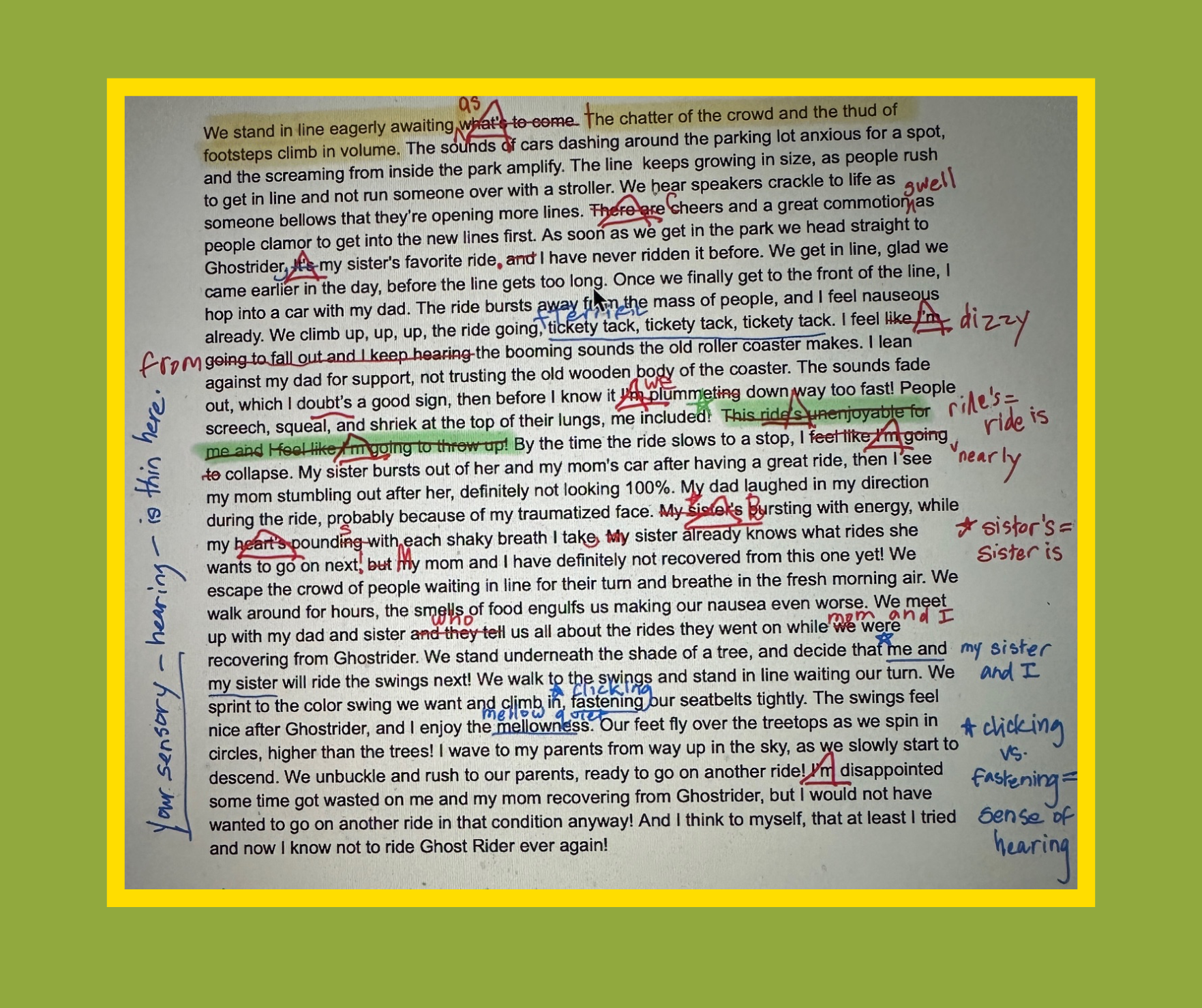
What is. There are. I am. These are passive phrases.
But what about: sister is and heart is? Well, these are passive phrases too!
When writers are constrained two ways—no passive verbs allowed and write an idea through the sense of sight—it’s rare that a passive verb doesn’t appear in the rough draft. Often times they peek in via contractions—what’s, it’s, she’s, the’ve and so on.
When this student opened the “sound” paragraph with, “We stand in the line eagerly awaiting what’s to come,” my red pen formed a triangle around the culprit. “What’s” is “what is,” after all! There is a list in the student journal to help guide the omission of passive verbs. Contractions are not listed, but rather, learned quickly!
So, back to that opening sentence. How do we help our students accomplish the task at hand? This was an opportunity to use an important writer’s trick—combine sentences. Voilà!
We stand in line eagerly awaiting as the chatter of the crowd and the thud of footsteps climb in volume.
After reading this refined, combined sentence your ears perk up! Right?
This paragraph is focused on detailing a scene through the sense of sound, and this is the perfect sentence to open the idea!
Introduction to Composition: The Essay, Volume 1 offers an opportunity for students to learn all about essay form and practice constrained writing. Each of the five lessons will explore specific traits of the essay—the thesis statement, topic and subtopics, the magic of three, body paragraphs, and how to open / close effectively. While students will not compose essays in Volume 1, they will engage in weekly writing activities to develop a strong voice. Writing an expanded paragraph through one particular sense without using a passive verb is not an easy task! But students will rise to the occasion and find their footing. At the end of the five lessons, students will be equipped with the tools they need to move into Volume 2 and Volume 3.
~Kimberly
